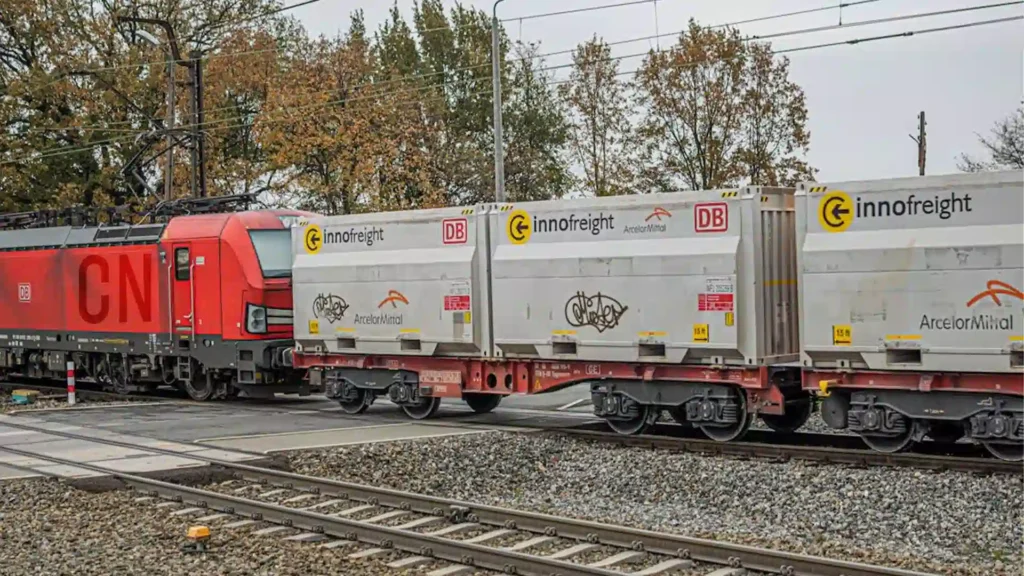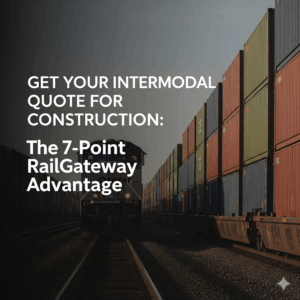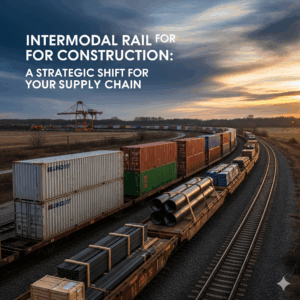Types of Shipping Containers
In 2025, efficient freight transport begins with one crucial choice: selecting the right type of shipping container. With global trade intensifying and the Canadian logistics sector modernizing, understanding the different types of shipping containers is essential for any business looking to optimize its supply chain, protect cargo, and reduce costs.
Shipping containers are the unsung heroes of modern logistics. They travel across continents—by rail, truck, and sea—housing everything from electronics and auto parts to grains, textiles, and heavy machinery. But not all containers are created equal. Selecting the wrong type can lead to cargo damage, excessive freight costs, or regulatory headaches. Choosing the right one, however, can mean safer transport, faster loading times, and smarter freight planning.
In this guide, we’ll break down the 11 essential types of shipping containers, explaining what each is best used for, what cargo they typically carry, and how they fit into modern Canadian and global freight logistics. Whether you’re new to container shipping or looking to optimize your intermodal strategy, this keyword-rich deep dive will equip you with the clarity to ship more intelligently in 2025.
Why It’s Crucial to Know The Types of Shipping Containers
The global standardization of container dimensions (thanks to ISO specifications) brought uniformity to freight—but the types of shipping containers have diversified to meet increasingly specialized shipping needs. Today’s logistics professionals must be familiar not just with standard containers, but also with specialty containers designed to handle temperature-sensitive goods, oversized cargo, liquids, fragile materials, and more.
Here’s why understanding the types of shipping containers matters in 2025:
- Cargo protection: Match the right container to cargo to prevent spoilage, shifting, or contamination.
- Compliance: Different cargo types require different container certifications and treatments.
- Cost control: Using the smallest or most efficient container for the job reduces excess weight and dimensional charges.
- Modal compatibility: Certain container types are optimized for rail, sea, or over-the-road transport—and may impact route planning.
- Operational efficiency: Specialized containers can improve loading/unloading times, saving on labour and equipment costs.
In short, mastering container types = smarter shipping decisions.
Standardization vs Specialization: Two Key Types of Shipping Containers
All shipping containers fall into two broad categories:
1. Standard Containers (Dry Freight)
These are the most commonly used containers for general cargo. They’re enclosed, weatherproof, and stackable, making them ideal for everything from textiles and electronics to boxed food and consumer goods.
2. Specialized Containers
Designed for specific types of cargo—refrigerated, oversized, liquid, or hazardous—these containers are essential for certain industries like food, pharma, chemicals, or construction.
Each category includes multiple types of shipping containers, each engineered for a distinct purpose. The goal: match container function to freight needs.
Key Shipping Trends in 2025 Influencing Container Choice
As logistics and supply chain trends evolve in 2025, so too does container demand. Several factors are pushing Canadian shippers to expand their knowledge of container types:
- Surge in intermodal rail freight: With more companies switching to intermodal to cut costs and reduce emissions, choosing containers suitable for both rail and truck movement is essential.
- Increased cold chain demand: A rise in perishable and temperature-sensitive goods means more demand for reefer containers.
- Green logistics: Lightweight or collapsible containers reduce fuel usage and carbon footprints.
- Diversified exports: Canadian shippers are moving everything from lumber and mining equipment to seafood and pharmaceuticals—requiring a broader range of container types.
- Cross-border regulation: U.S. and global freight laws influence the types of shipping containers that can legally be used, especially for hazardous or regulated goods.
By understanding container types, businesses can better navigate these trends—and gain a competitive edge.
Overview of the 11 Essential Types of Shipping Containers
In the sections that follow, we’ll go deep on each of the following types of shipping containers, covering dimensions, key features, ideal cargo, and Canadian shipping use cases:
- Standard Dry Containers (20ft and 40ft) – The backbone of global freight, used for most general cargo.
- High Cube Containers – Taller versions of standard containers, ideal for lightweight but bulky goods.
- Open Top Containers – Allow top-loading of large or irregular cargo like pipes or machinery.
- Flat Rack Containers – No walls or roof, perfect for oversized equipment or vehicles.
- Refrigerated Containers (Reefers) – Temperature-controlled for food, pharmaceuticals, and perishables.
- Insulated Containers – Maintain internal temperature without active refrigeration; used for shorter cold-chain hauls.
- Tank Containers (ISO Tanks) – Designed to transport liquids, gases, or hazardous chemicals safely.
- Ventilated Containers – Equipped with airflow systems, often used for agricultural products or coffee beans.
- Double Door Containers – Easier access from both ends, great for quick loading and unloading.
- Side Opening Containers – Allow full-side access for machinery or large palletized goods.
- Swap Bodies – Common in Europe but gaining traction in North America for road and rail freight.
Each of these types plays a critical role in Canada’s shipping economy, whether for domestic intermodal freight, cross-border trade with the U.S., or overseas containerized exports.
Making the Right Choice: Matching the Right Types of Shipping Containers to Cargo
Choosing the correct container type is about cost-efficiency, cargo safety, and operational logistics. For instance:
- A tech company shipping electronics from Toronto to Vancouver may choose a 40ft high cube dry container to accommodate lightweight but space-consuming boxed goods.
- A seafood exporter shipping frozen salmon from British Columbia to Japan will need a 40ft reefer container with precise temperature control and backup power.
- An industrial manufacturer transporting construction equipment across Alberta may opt for a flat rack or open top container to handle irregular dimensions and overhead crane loading.
Each container type serves a very specific shipping scenario—and choosing incorrectly can result in excess costs, delays, or cargo rejection at destination.
How Container Choice Impacts Your Bottom Line
Here’s how selecting the right type of shipping container contributes directly to business success:
- Reduced damage claims: Specialized containers protect fragile, volatile, or oversized goods.
- Improved efficiency: Correct container dimensions and access reduce handling time.
- Lower freight costs: Minimize wasted space, dimensional weight surcharges, and unnecessary equipment rentals.
- Better compliance: Meet customs, hazmat, or food safety requirements.
- Faster transit: Containers suited for intermodal transit reduce delays at ports and rail yards.
In 2025, shippers that understand container design and function are the ones saving money, meeting deadlines, and avoiding costly errors.
Container Strategy as Part of a Bigger Freight Picture
Optimizing container use is only one part of a broader strategy that includes intermodal logistics, freight consolidation, and technology-driven shipping decisions. Businesses that factor in cargo type, route, seasonality, and transport mode will naturally choose the best container—often saving thousands per year in the process.
Coming up next, we’ll explore each of the 11 essential types of shipping containers, with real-world Canadian use cases and tips for selecting the right one for your cargo.
Did you know that over 90% of global trade is transported by sea, with shipping containers playing a critical role? Let’s explore these types of shipping containers and their wide-ranging applications in modern commerce.
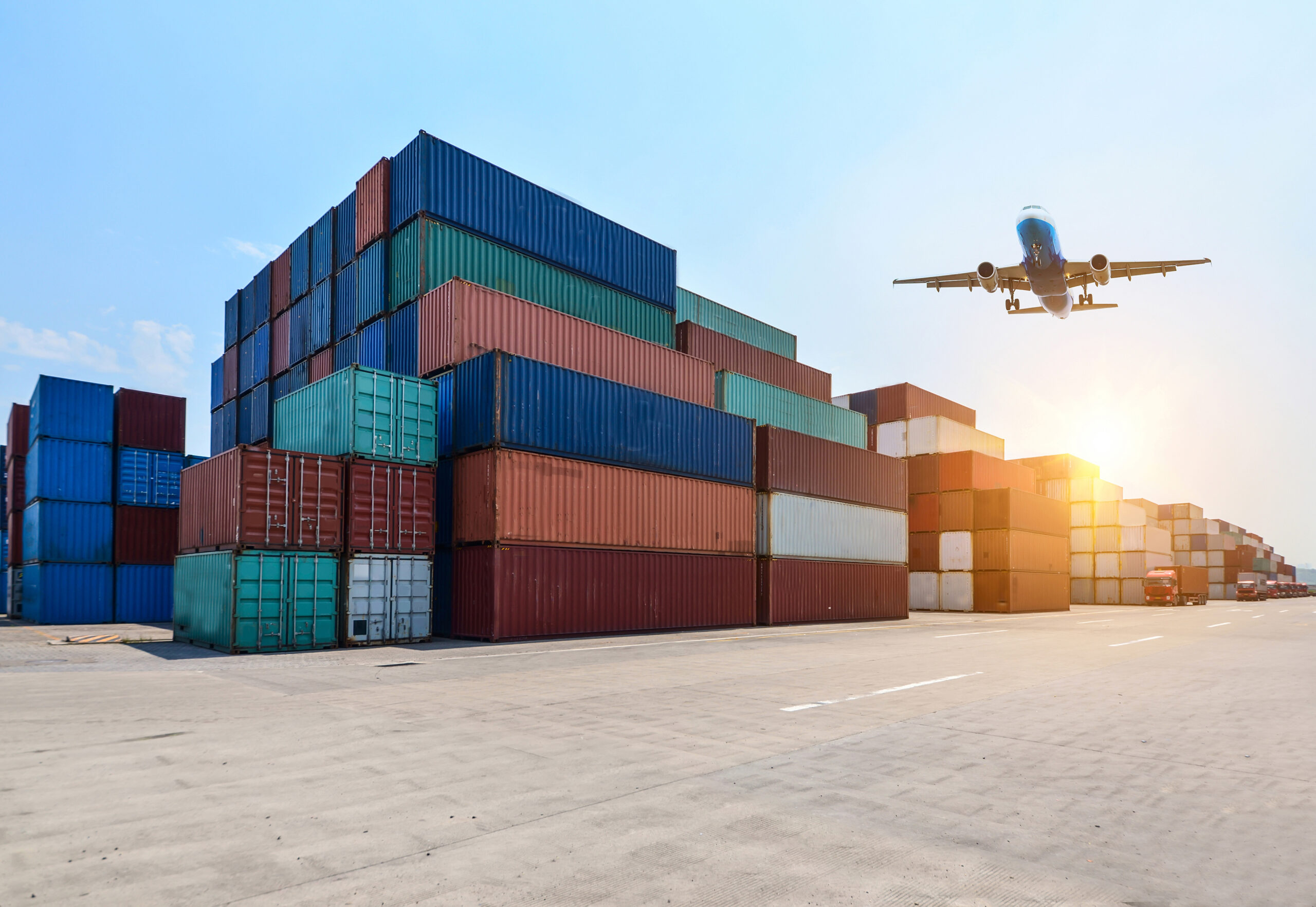
What are Standard Dry Storage Containers?
Standard dry storage containers are the most widely used types of shipping containers worldwide. They are the default choice for transporting non-perishable goods and are versatile enough to meet the needs of various industries.
Standard containers are enclosed, weatherproof units typically available in 10ft, 20ft, and 40ft sizes, used for transporting general cargo. These containers are constructed with durable materials like steel or aluminum, ensuring longevity and resistance to harsh environmental conditions.
Key Features
- Fully enclosed and weatherproof.
- Made of durable steel or aluminum.
- Equipped with secure locking mechanisms.
- Uniform dimensions for easy stacking and transportation.
Common Uses
- Electronics
- Furniture
- Textiles
- Packaged foods
Standard containers are the backbone of the shipping industry, ideal for most general-purpose cargo making them the most used types of shipping containers. Their widespread availability and compatibility with various transport modes make them indispensable.
Why Use Flat Rack Containers?
Flat rack containers are perfect for oversized cargo that doesn’t fit in standard containers. Their open sides and collapsible ends make them uniquely suited for handling large and irregularly shaped items.
Flat rack containers have collapsible sides, providing a flat platform for large or irregularly shaped cargo like machinery, construction equipment, or even yachts.
Advantages
- Open sides allow for flexible loading and unloading.
- High weight capacity for heavy cargo.
- Suitable for goods that exceed standard container dimensions.
Common Applications
- Industrial machinery
- Vehicles
- Large construction materials
Flat rack containers simplify the process of shipping bulky and oversized items, offering a practical solution for industries with specialized cargo needs.
What are Open Top Containers
Open top containers are designed for top-loading cargo that is too tall for standard containers. Their removable tarpaulin roof provides the flexibility needed for items that cannot be loaded through standard doors.
Open top containers have a removable tarpaulin roof, making them ideal for tall or awkwardly shaped items. This design ensures easy access for cranes and other heavy-duty loading equipment.
Common Uses
- Tall machinery
- Bulk minerals
- Large industrial equipment
- Recyclable materials
These types of shipping containers have a unique design. Open top containers offer convenience for industries handling tall or irregular cargo. They’re particularly useful in mining, construction, and recycling sectors.
Exploring Tunnel Containers
Tunnel containers, also called double door containers, offer easy loading and unloading access from both ends. Their innovative design enhances efficiency, especially when access to cargo is needed from multiple points.
Tunnel containers have doors on both ends, making them one of the most highly efficient types of shipping containers for quick access during loading and unloading.
Benefits
- Faster loading and unloading times.
- Ideal for construction materials and steel.
- Enhanced flexibility for storage and transportation.
Their practicality makes them one of the favorite types of shipping containers in industries requiring swift operations, such as construction and manufacturing.
Open Side Storage Containers
Open side storage containers offer enhanced accessibility for wide or oversized cargo. These containers have full-length side-opening doors, allowing for easier handling and efficient loading.
These containers have side-opening doors, allowing for easier handling of bulky items that may not fit through standard doors.
Common Applications
- Loading wide materials.
- Flexible access for irregularly shaped goods.
- Temporary storage for large-scale projects.
These types of shipping containers type cater to industries that prioritize convenience and accessibility, including event planning and large-scale construction.
Refrigerated ISO Containers
Refrigerated containers, or reefers, are indispensable for transporting perishable goods. These containers maintain a controlled temperature, ensuring the safe transportation of sensitive items.
Refrigerated containers maintain a consistent temperature for transporting food, pharmaceuticals, and temperature-sensitive products. They come equipped with built-in cooling systems that can sustain temperatures ranging from -30°C to +30°C.
Did You Know
- The global reefer container market is projected to reach $15 billion by 2030.
Applications
- Fresh produce
- Dairy products
- Vaccines and pharmaceuticals
- Frozen seafood
Reefers ensure freshness and quality in global food and pharmaceutical supply chains, playing a crucial role in maintaining the cold chain.
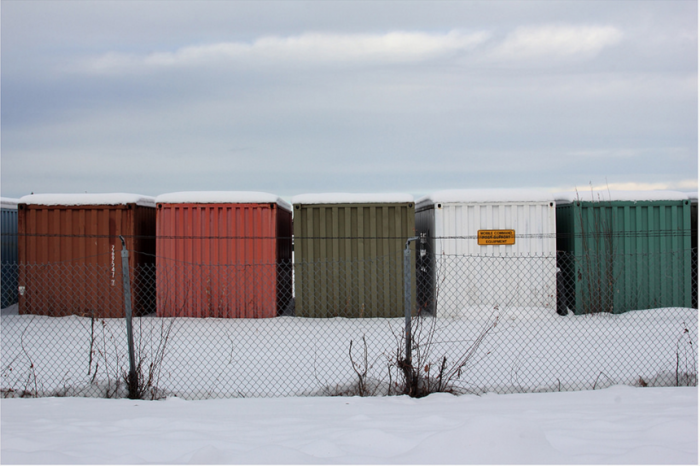
Insulated or Thermal Containers
Insulated containers are built to maintain a stable temperature without external power. These types of shipping containers are designed for transporting temperature-sensitive goods over long distances while preserving their quality.
Insulated containers are ideal for transporting goods over long distances while preserving their condition. They are lined with insulating materials to reduce temperature fluctuations.
Applications
- Chemicals
- Organ transportation
- Temperature-sensitive electronics
These containers are perfect for industries requiring temperature stability without relying on electrical refrigeration.
Understanding Tank Containers
Tank containers are specialized for transporting liquids and gases safely. These cylindrical units are built to rigorous standards to ensure safe handling of hazardous and non-hazardous materials.
These types of shipping containers are cylindrical units used for carrying hazardous and non-hazardous liquids like chemicals, oils, and beverages. They are made from stainless steel and often have protective layers for added durability.
Safety Features
- Built to ISO standards.
- Equipped with pressure relief valves.
- Leak-proof design.
Common Uses
- Transporting chemicals
- Shipping edible oils
- Wine and spirits
Tank containers ensure safe and efficient transport of liquid cargo, reducing risks associated with leaks or spills.
Half-Height Containers
Half-height containers are ideal for dense, heavy cargo that requires a lower center of gravity for transport. Their shorter height makes them particularly useful for certain industries.
These containers are shorter than standard ones, commonly used for transporting heavy materials like coal, stones, and gravel.
Benefits
- Durable and compact.
- Suitable for mining and construction industries.
- Reduced risk of tipping during transport.
Half-height containers are a smart choice for industries dealing with heavy loads, ensuring safety and stability during transit.
Car Carriers
Car carriers are specifically designed for vehicle transportation, ensuring safety and efficiency during transit. These containers protect vehicles from external damage and allow for organized shipping.
Car carriers securely transport vehicles, protecting them from damage during transit. They come in 20ft and 40ft sizes and can accommodate multiple vehicles at once.
Highlights
- Available in 20ft and 40ft sizes.
- Can transport multiple vehicles simultaneously.
- Secure tie-down points for added safety.
Car carriers simplify automotive logistics, ensuring vehicles arrive at their destination in pristine condition.
High Cube Containers
High cube containers provide extra height for larger cargo, making them a versatile choice for industries dealing with bulky yet lightweight goods.
High cube containers are one foot taller than standard containers, suitable for voluminous goods that require additional vertical space.
Perfect For
- Furniture
- Electronics
- Lightweight but bulky items
- Oversized packaging
Their additional height accommodates cargo that requires more vertical space, making them popular in the manufacturing and retail sectors.
Choosing the Right Container for Intermodal Rail Shipping
When it comes to efficient and reliable cargo transportation, intermodal rail shipping stands out as a cost-effective and eco-friendly option. Selecting the right shipping container is crucial to maximizing the benefits of this mode of transport.
Why Intermodal Rail Shipping Matters?
Intermodal rail shipping involves moving goods in containers via a combination of truck and rail. This method reduces transit costs, lowers carbon emissions, and ensures the safe handling of your cargo. At RailGateway, we specialize in providing seamless intermodal rail shipping solutions tailored to your container type and cargo needs.
Containers Perfect for Rail Shipping
Certain containers work particularly well with intermodal rail transport, including:
- Standard Dry Storage Containers: Ideal for general cargo and compatible with most intermodal platforms.
- Refrigerated ISO Containers: Perfect for temperature-sensitive goods during long-distance rail journeys.
- High Cube Containers: Suitable for large or bulky items that require extra height.
By choosing the appropriate container and leveraging services like those offered by RailGateway, businesses can optimize their supply chain, reduce costs, and ensure timely delivery.
Final Thoughts: Choosing the Right Types of Shipping Containers in 2025 for Smarter, Safer, and More Cost-Efficient Freight
In today’s fast-moving logistics landscape, having a solid grasp of the types of shipping containers available in 2025 is no longer optional – it’s essential. Whether you’re moving goods across Canada, shipping to the U.S., or navigating overseas export lanes, choosing the right types of shipping containers directly impacts your freight costs, delivery timelines, cargo protection, and long-term logistics performance.
Throughout this guide, we’ve explored the 11 essential types of shipping containers, from versatile dry containers and high cubes to specialized units like reefers, flat racks, and ISO tanks. Each container has a specific purpose, optimized for certain cargo characteristics, transportation modes, and environmental conditions. Businesses that understand these distinctions gain a competitive edge by matching container functionality to their freight strategy.
Recap: Why Choosing the Right Types of Shipping Containers Matters
Here’s a quick summary of how selecting the right container helps:
- Maximizes space efficiency – The right size and structure reduce empty space and unnecessary shipping volume.
- Protects high-value or sensitive cargo – Whether it’s frozen seafood, fragile electronics, or hazardous materials, specialized containers minimize risk.
- Improves handling and loading times – Open top, side access, and double door containers simplify operations and cut labour costs.
- Reduces shipping costs – Using the appropriate container avoids oversized charges, repacking fees, and loss from damaged goods.
- Supports multimodal logistics – Many container types are designed for seamless transfer between rail, truck, and ship—crucial in Canada’s intermodal-heavy shipping networks.
As Canadian businesses continue to scale, diversify their offerings, and expand their distribution footprints, knowledge of container types becomes an operational advantage. Whether you’re moving large-scale commodities or small-batch goods, container strategy is logistics strategy.
Navigating the Future of Freight with Expert Help
That said, selecting the right shipping container isn’t always straightforward. Cargo size, weight, mode of transport, weather, regulations, and timing all factor into the decision. This is why many businesses choose to work with a logistics provider that understands the full range of container options and can help design cost-effective, scalable freight plans.
That’s where RailGateway comes in.
As one of Canada’s leading experts in intermodal rail shipping, RailGateway helps businesses navigate their freight challenges from end to end—including helping clients choose the optimal type of shipping container for their specific cargo and routing needs.
We combine deep knowledge of container types with smart shipping technology, freight consolidation strategies, and carbon-reducing rail solutions that keep your cargo secure and your bottom line protected.
Ready to Choose the Right Types of Shipping Containers for the Job?
Visit railgateway.ca to request a tailored container consultation, get expert insight into the best shipping methods for your cargo, and learn how our intermodal container solutions can support safer, smarter, and more efficient freight in 2025 and beyond.
Because with the right container—and the right partner—you’re not just shipping freight. You’re shipping with purpose.


